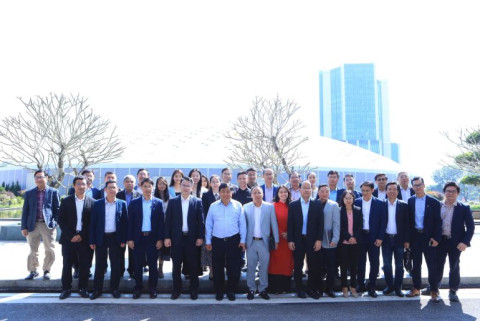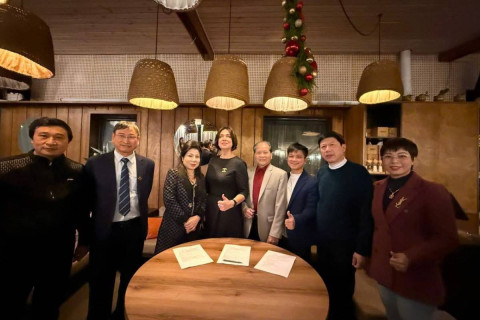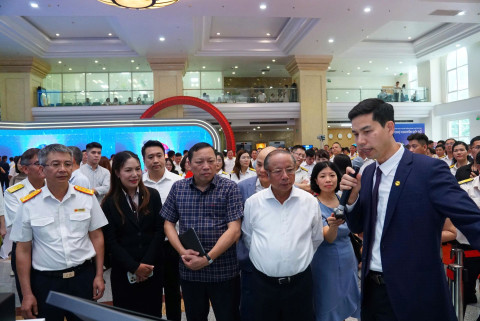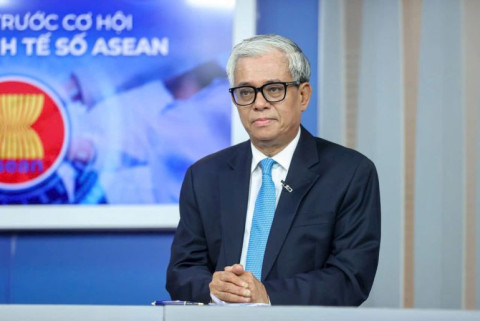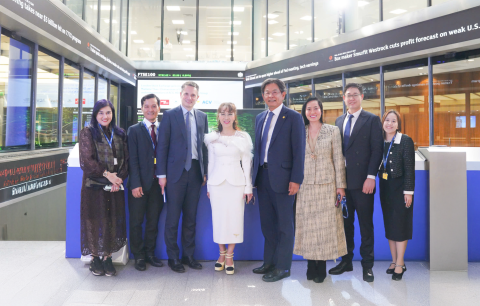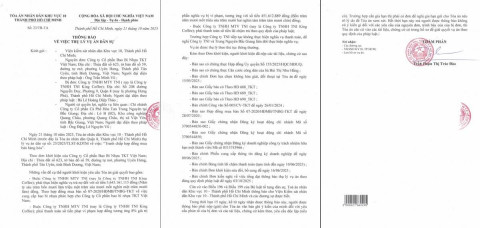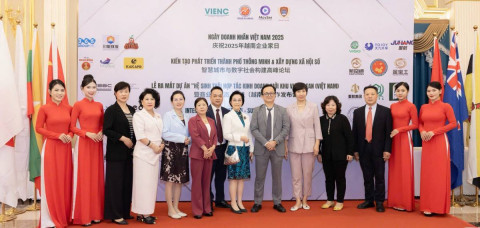Why Vietnamese Enterprises Are Still Not Keen on Commodity Exchanges
- 174
- Business
- 15:24 15/01/2024
DNHN - The value of commodity transactions via exchanges accounts for 24% of the total trading volume of products worldwide, with Asia accounting for 56%. The indices of some famous commodity exchanges have become the guiding principle for the world market.
The above information was provided by Mr Pham Hai Tung - Vice Chairman of the Vietnam Association of Small and Medium Enterprises at the seminar “Trading via Commodity Exchanges - A Sustainable Business Solution, Multiplying Profits” organised by Enterprise and Integration Magazine - the mouthpiece of the Vietnam Association of Small and Medium Enterprises in Ho Chi Minh City.
Accordingly, Mr Tung said that in Vietnam, the Mercantile Exchange of Vietnam (MXV) was established by the Ministry of Industry and Trade in 2010. With Decree No. 51/2018/ND-CP amending and supplementing some articles of Decree No. 158/2006/ND-CP dated December 28, 2006, detailing the Commercial Law on trading goods through commodity exchanges of the Prime Minister, the legal framework for trading activities in this form has become truly transparent like international exchanges. Therefore, trading activities through the Commodity Exchange in recent years have had many changes. Currently, the Mercantile Exchange of Vietnam has 26 items belonging to five groups of goods traded and connected to 8 major commodity exchanges in the world. As of the end of August 2023, there were more than 30,000 accounts registered and trading. According to statistics from the first 8 months of 2023, the average trading value per session reached VND 4,000 billion, and the peak session reached VND 9,500 billion.
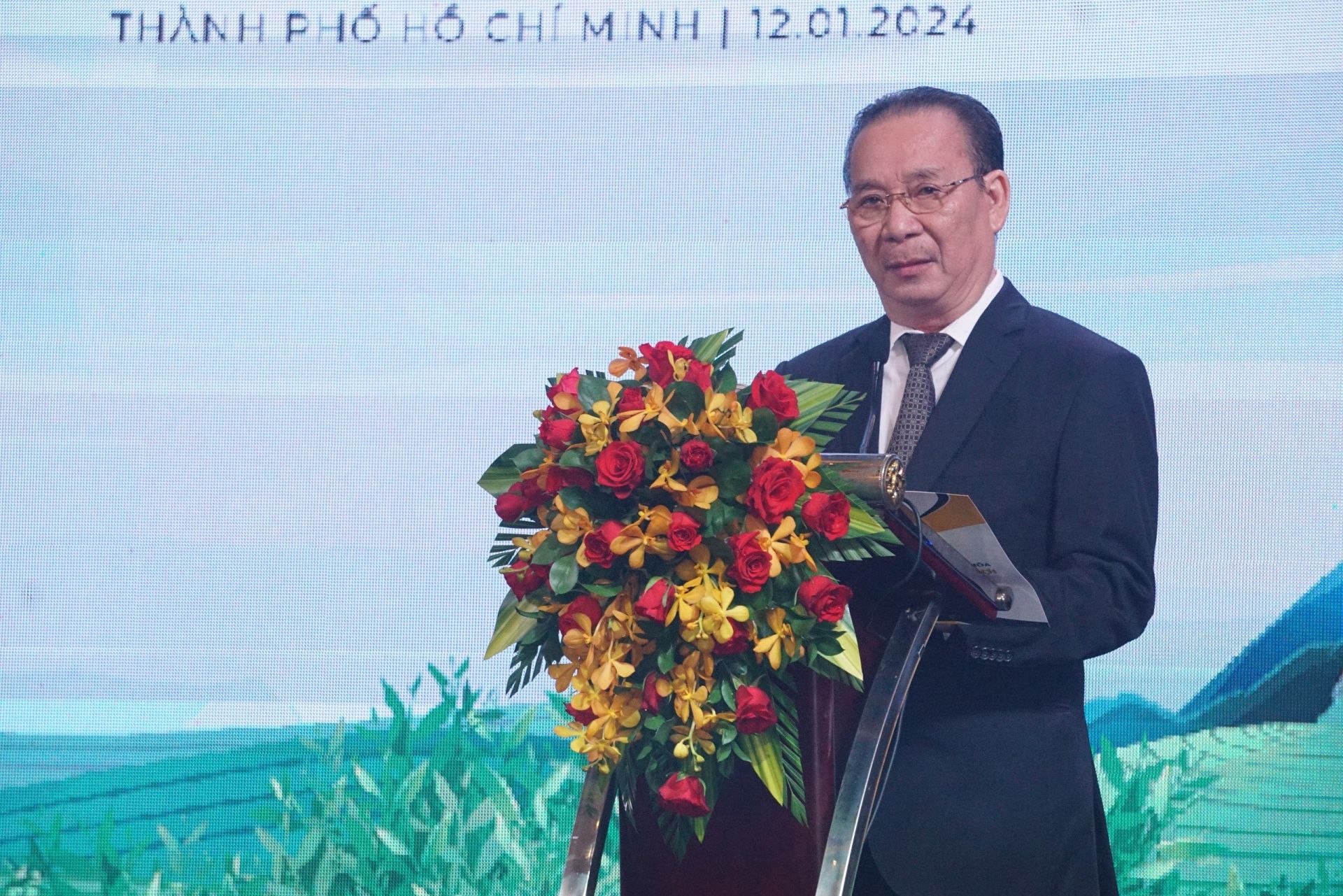
“The above results are still quite modest compared to the potential of Vietnam. Trading goods through exchanges is a form of business that brings many advantages such as it enables businesses to trade quickly by electronic means, so they can trade with the whole world from just one place, minimising risks for both buyers and sellers due to the intermediary role of exchanges, businesses can also rest assured to produce and trade without worrying about price fluctuations in the market. In addition, businesses or investors can participate in trading and investing in derivative commodities,” said Mr Pham Hai Tung.
“We believe that this is an important solution to solve the long-standing situation of” bumper crops, low prices” in Vietnam’s agricultural sector. Moreover, this is also a form that is very suitable for the trend of expanding international trade and e-commerce of the Party and the State,” Mr Tung emphasised.
Commodity exchanges were born in the 18th century and have now become a popular trading channel worldwide. However, this form of trading has not developed commensurately in Vietnam. Regarding this issue, Dr Vo Tri Thanh - Director of the Institute for Strategy and Competitiveness Studies, also explained the reason why businesses do not understand it well. He said that many people misunderstand this concept, leading to the fact that Vietnam is not very interested in it while the world has applied it for a long time.
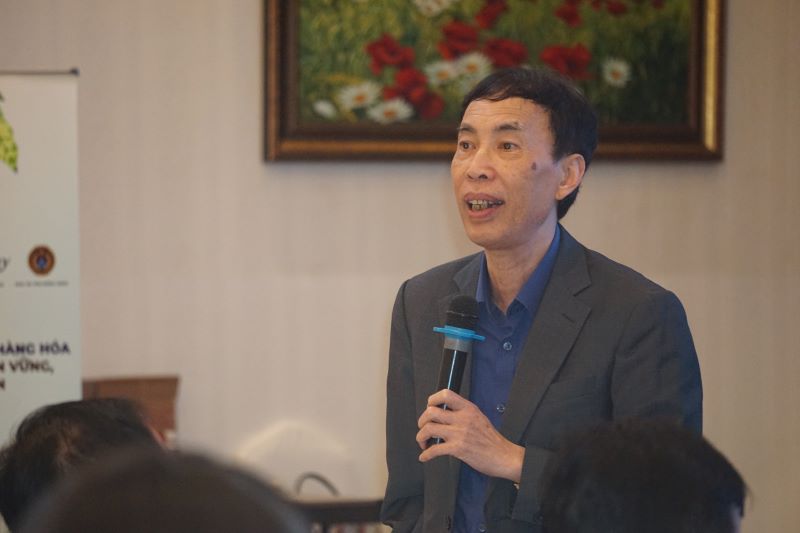
“Some people say that this exchange is similar to the Forex market or the stock market, so it can be said that this is a basic commodity exchange. If we talk about basic commodity trading like that, it is very old because, from the time humans produced agricultural products and had revenue, the nature of these cash flows is a financial investment and is backed by the production and circulation of basic commodities, it is no different from the market,” said Mr Thanh. “However, the exchange is more advanced for 2 reasons: it is a market with full competitive information, limiting asymmetric information between buyers and sellers, the role in the market with the highest efficiency… This is called a high-end market that forces businesses to learn to be able to stand firm in the new situation of continuous development as it is today.”
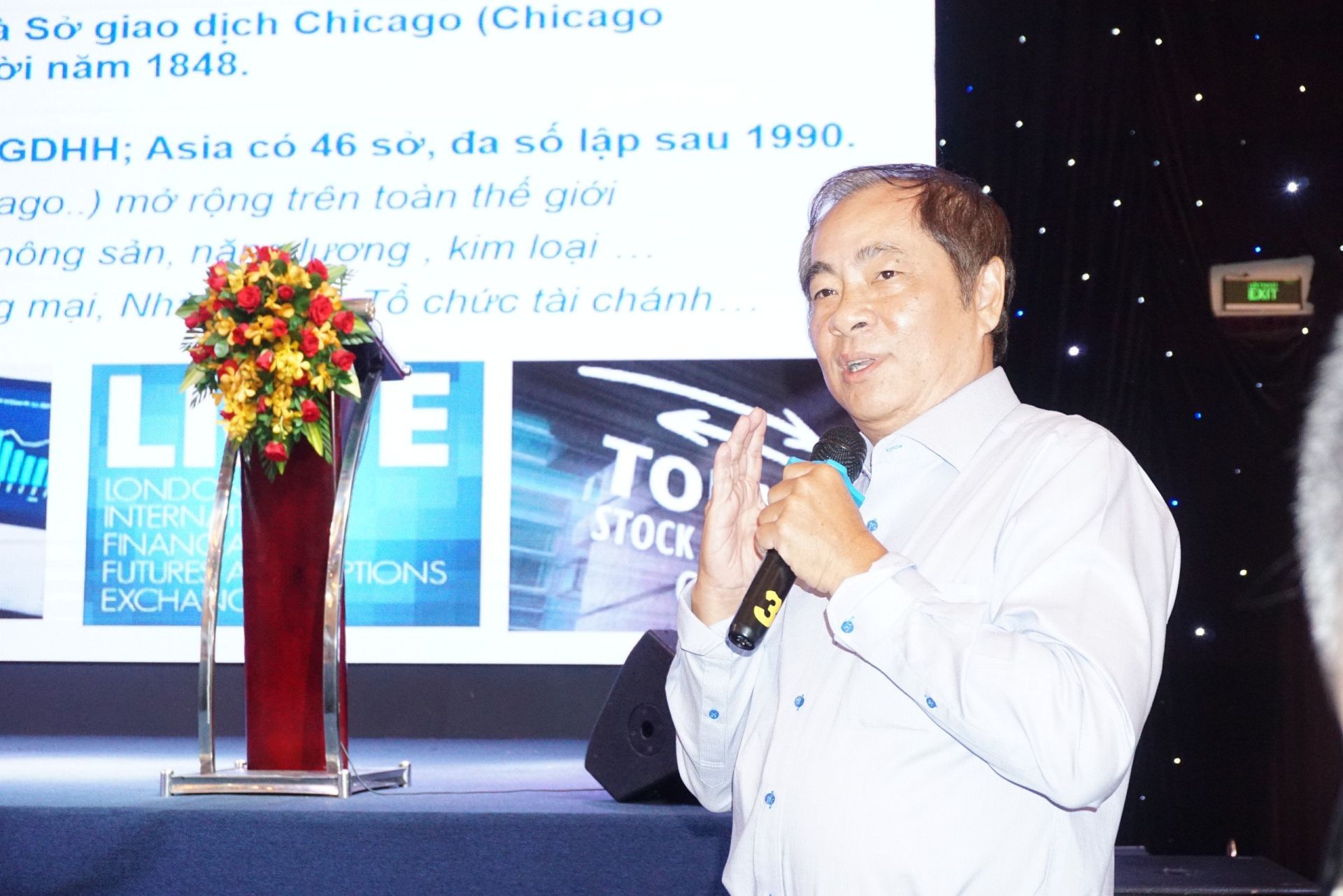
Sharing the same view, Dr Dinh The Hien - Director of the Institute for Informatics and Applied Economics said that ensuring safety and liquidity in the trading of large volumes of goods, price safety, and quality standards are extremely necessary for businesses. Although commodity exchanges have existed for a long time and have developed strongly in European countries, the US, in Vietnam, this form has not yet been clearly defined. Currently, there are more than 100 commodity exchanges in the world with large entities such as ICE, LIFE, Chicago… In the Asia region alone, commodity exchanges have only emerged since after 1990 and up to now, there have been 46 exchanges with main product lines such as agricultural products, energy, metals…
As a long-standing enterprise and also a native of the Central Highlands, Mr Luong Tuan Vu - CEO of Gia Cat Loi Commodity Trading Joint Stock Company - a member of the Mercantile Exchange of Vietnam, has witnessed many “rescue” operations for farmers. “Can our farmers develop like farmers in the world such as the US, UK, Japan… or not? Developed countries in the world, before they grow a product such as corn, potatoes, cassava or soybeans, coffee, or wheat… all determine which product is suitable for their land and how much profit it will bring on the exchange among the listed items…”, Mr Vu shared.

Also according to Mr Vu: In the Central Highlands, I have witnessed many households seeing high coffee prices and rushing to cut down pepper and cashew trees to grow coffee, then seeing high rubber prices and cutting down coffee, pepper, and other trees to grow rubber, and then going in circles. Even in the Central Highlands in the past few years, there has been a boom in growing passion fruit. At first, passion fruit was speculated up to VND 60,000/kg, now it has dropped to VND 45,000/kg, and no one wants to sell it anymore, but if passion fruit is not sold, it cannot be eaten after a few days, it will rot. Those are the inconveniences of the people as well as the businesses that buy and sell when our businesses act as traders for China…

Also at the seminar, businessman Tran Quoc Cuong - Director of Huy Thanh Dat Joint Stock Company operating in the steel sector also talked about his company after the COVID-19 pandemic began to be controlled, the economy began to recover, creating a new wave of commodity price increases, something that had never been seen before. Global metal demand has increased significantly since Q1/2021 when many countries have approved and accelerated the construction progress of infrastructure projects, thereby stimulating Vietnamese steel producers to boost exports, especially to the US market. Metal prices also started to increase sharply, so our business’s operations in 2021 also indirectly benefited.
“However, domestic steel market demand fell sharply in 2022 due to the strong impact of the real estate market freeze caused by tight real estate credit policies; the corporate bond market faced difficulties; high-interest rates… Slow consumption forced our business to adjust and reduce import output, continuously adjust selling prices down, and inventory was always high… Revenue began to decline sharply, and business operations faced many risks in terms of selling prices, even heavy losses,” shared Mr Cuong.
Therefore, Mr Cuong said that the solution to hedging steel price risks immediately addresses the issue of ensuring the value of inventory, fixing input costs, and fixing output profit margins. Price risk hedging activities are carried out through the Mercantile Exchange of Vietnam when providing businesses with the right to connect and trade with major metal commodity exchanges in the world such as LME, NYMEX… Through the Mercantile Exchange of Vietnam, his company can also easily update the fluctuations of world metal prices in real-time, so price forecasting work has also been significantly improved.

In addition, Mr Cuong also proposed that the Mercantile Exchange of Vietnam (MXV) should develop a more flexible transaction fee and margin policy. Reduce the ceiling of transaction fees and membership fees, creating conditions for trading members to reduce transaction costs for customers better. For individual customer accounts, the margin level can be applied as for institutional customers and equal to the margin level prescribed by international exchanges. Currently, MXV has only been able to perform the function of organising and operating, acting as an intermediary to connect with international exchanges, and is simply an intermediary brokerage organisation. MXV has not yet performed the larger functions and roles at present. It is proposed that in the coming time, MXV needs to enhance its role in the market organisation, study to put some Vietnamese products with strengths on the exchange and move towards supporting corporate customers in implementing actual goods handover, ensuring that it is linked to domestic commodity prices close to international commodity prices.
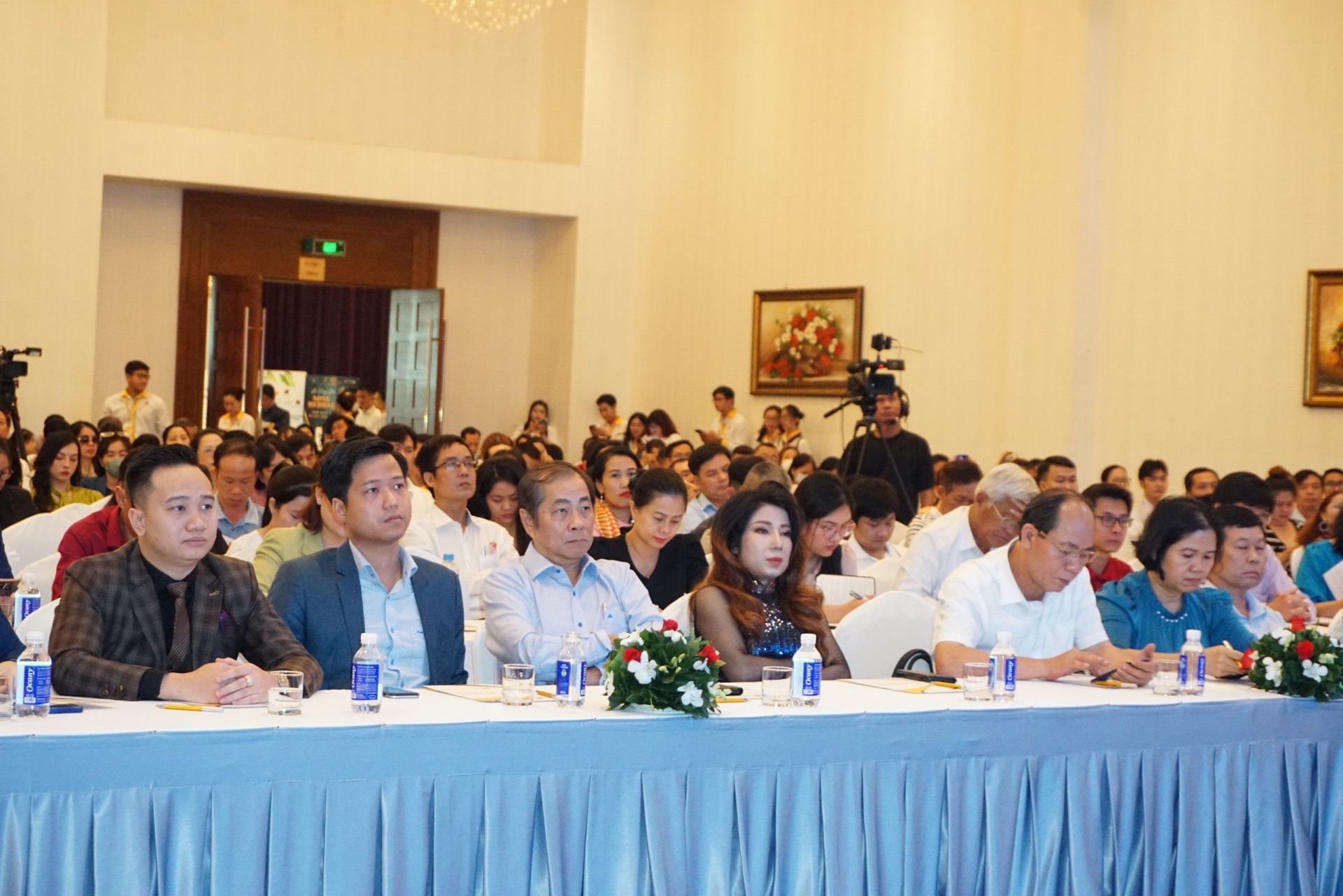
Ministries and sectors responsible for advising the Government on policies need to closely follow market practices. Developing new products needs to have a legal framework in advance to ensure that the market operates smoothly, in the right direction of the state, and protects the safety of customers and investors.
Commodity derivative products are high-level financial products, requiring participating investors to have specialised knowledge in finance, industry, economics, technical analysis, etc. However, at present, the training of knowledge on commodity derivatives is mostly carried out by commodity trading companies, and the training is not yet standardised, and the training knowledge has not been standardised. Therefore, the popularisation and dissemination of goods to the community has not been widespread and has not been well received by the majority of social strata. It is recommended that in the coming time, ministries, sectors, MXV, and commodity companies need to coordinate to develop a set of standard teaching materials on knowledge and at the same time open high-quality certified training centres to support knowledge for investors and ensure the popularisation of products to the public.
Some photos from the seminar:
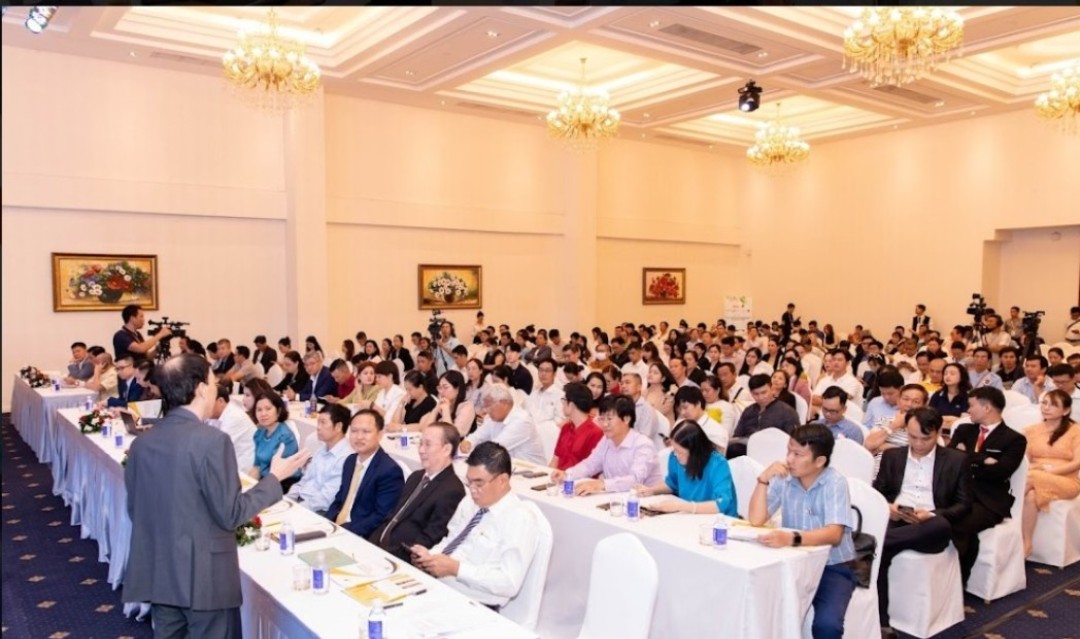

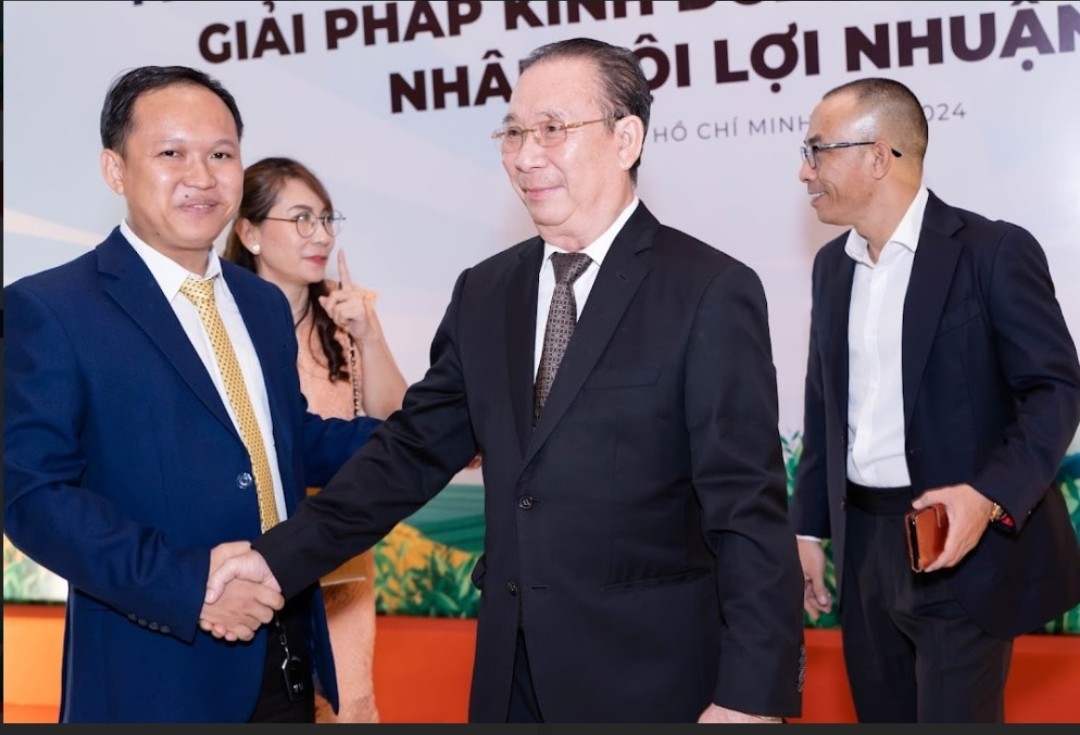

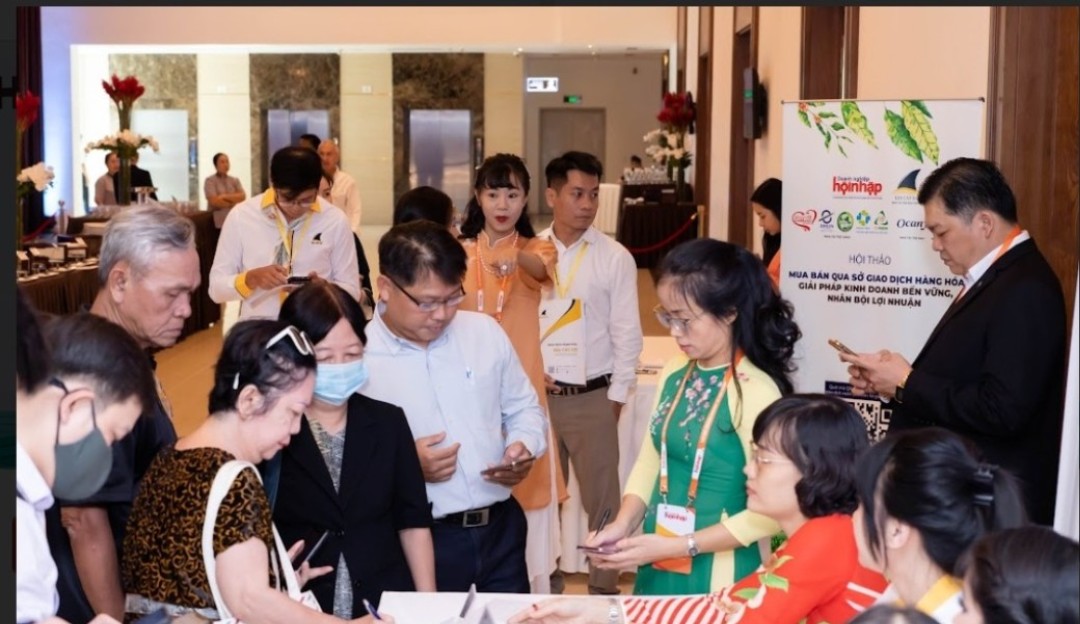
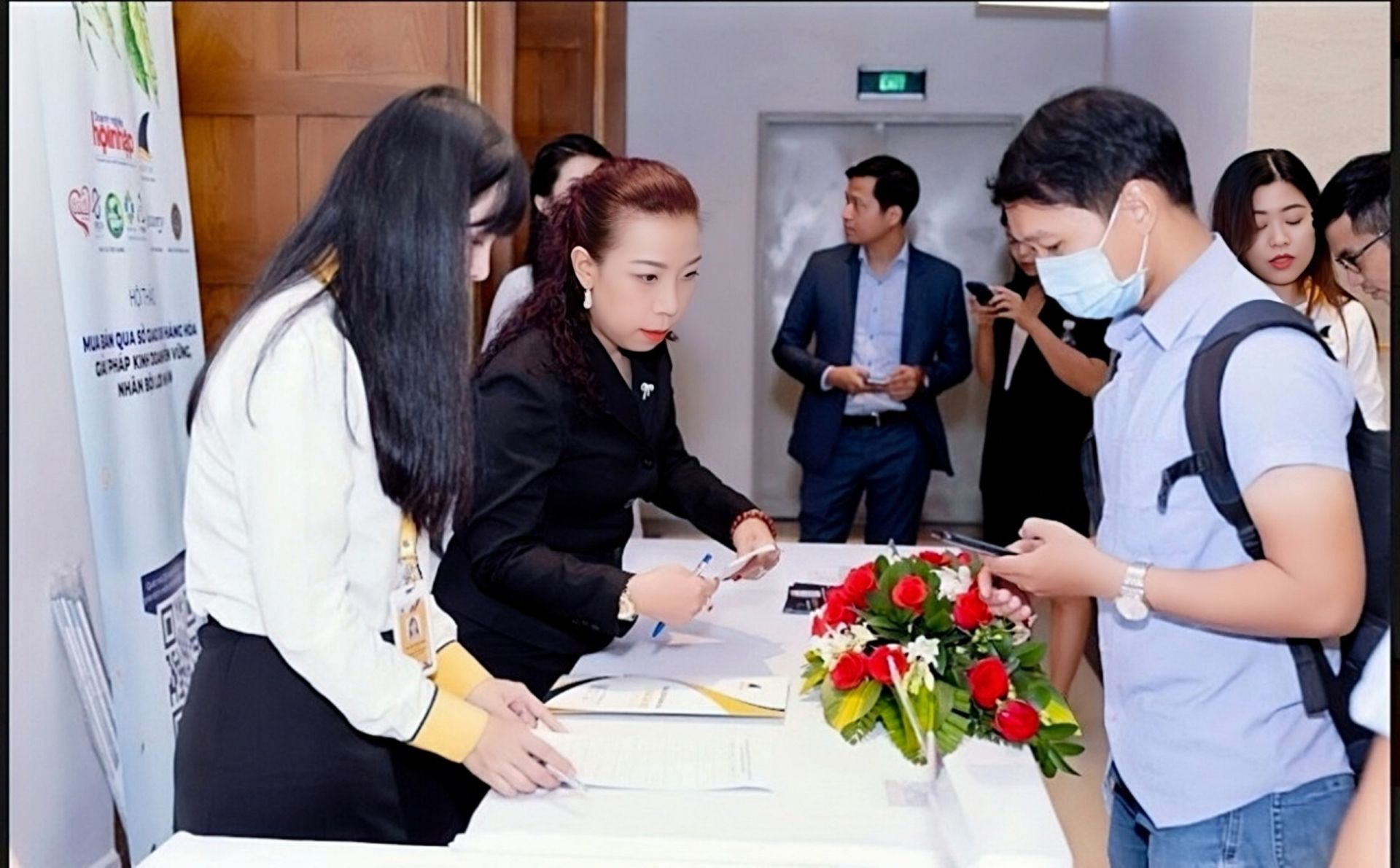
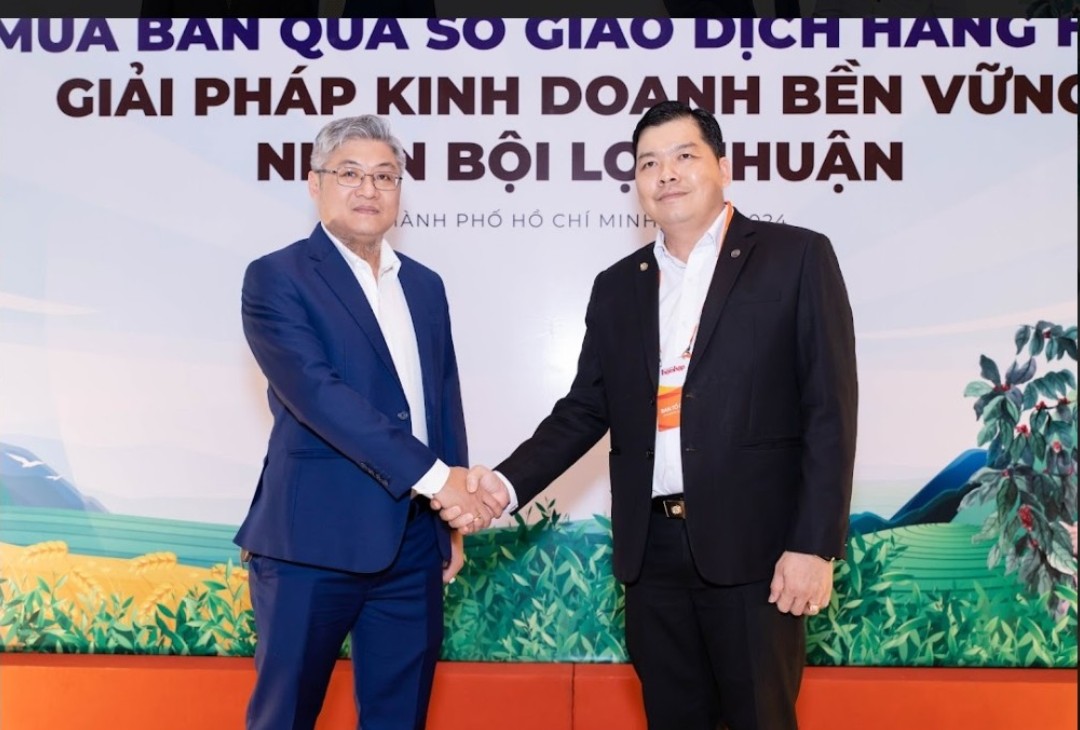
Uyen Nhi
Related news
- Connecting Leaders, Shaping the Future: Strategic Leadership Planning Meeting – CorporateConnections Hanoi A
- Sunlight - Unilever Vietnam Recognized for Outstanding Contributions to the National Initiative Supporting Women Entrepreneurs
- Deputy Prime Minister Nguyễn Chí Dũng: “The country’s major challenges weigh heavily on my mind — and we must resolve them together.
- Unitsky String Technologies signs cooperation agreements with three Vietnamese partners, opening a new direction for smart mobility and sustainable development
- When artists do business – livelihood is no poetry!
- Before the D‑day to abolish flat‑rate tax: Fear of technology and costs leave small traders struggling to adapt
- Vietnamese enterprises at a crossroads: the impact of a potential US–China deal
- "Digital technicians" must not be forgotten if Vietnam aims to meet its strategic goals
- HDBank: Impressive profit growth, leading in profitability and advancing international integration
- TNI King Coffee sued for over VND 5 Billion in unpaid debts
- VINASME and Jeonnam Technopark Sign MOU on technology cooperation, human resource training, and trade promotion
- Vietnamese entrepreneurs strengthen ASEAN connectivity in the digital iIntegration era
- Prime Minister: Vietnam aims to become a regional logistics hub
- Vietnam upgraded to Secondary Emerging Market by FTSE Russell
- Hanoi’s economy grows 7.92% in first nine months of 2025, FDI surges nearly threefold
- Vietnam’s strong gdp growth fails to ease labor market distress
- US tariffs on Brazil propel Vietnam’s pangasius into global spotlight
- VietLeap AI Accelerator launches: A strategic springboard for Vietnam’s AI startups
- CICON expands strategic alliances: A new step forward in Vietnam–Korea business connectivity
- What must Vietnamese enterprises do to maintain their position in the global supply chain?
Đọc thêm Business
Connecting Leaders, Shaping the Future: Strategic Leadership Planning Meeting – CorporateConnections Hanoi A
"Your network is your most powerful flowing asset. It generates value, multiplies opportunities, and accelerates your influence across borders."
Innovative ESG enterprise: Trạm Xe Việt startup proposes solutions to build a green mobility ecosystem
As Vietnam commits to achieving Net Zero by 2050 and tightens emissions standards, the transportation sector faces unprecedented pressure to transform.
Deputy Prime Minister Nguyễn Chí Dũng: “The country’s major challenges weigh heavily on my mind — and we must resolve them together.
On the morning of November 26, 2025, Deputy Prime Minister Nguyễn Chí Dũng chaired a high-level working session at the National Innovation Center (NIC) in Hòa Lạc.
Unitsky String Technologies signs cooperation agreements with three Vietnamese partners, opening a new direction for smart mobility and sustainable development
The signing ceremony took place in Minsk, Belarus, on November 28, 2025.
Before the D‑day to abolish flat‑rate tax: Fear of technology and costs leave small traders struggling to adapt
From 1 January 2026 the flat‑rate tax regime will be abolished. Small business households will be required to declare tax based on actual revenue. MISA supports the transition with technology to help micro‑merchants adapt smoothly and transparently.
Vietnamese enterprises at a crossroads: the impact of a potential US–China deal
As the world closely monitors every shift in US-China relations, emerging signals of a strategic agreement between the two global powers are raising hopes for global economic stability.
HDBank: Impressive profit growth, leading in profitability and advancing international integration
Ho Chi Minh City Development Joint Stock Commercial Bank (HDBank, stock code HDB) announced its consolidated profit before tax for the first 9 months of 2025 reached VND 14,803 billion, marking a 17% increase year-on-year (YoY).
TNI King Coffee sued for over VND 5 Billion in unpaid debts
On October 21, 2025, the People’s Court of District 10 in Ho Chi Minh City officially accepted a civil lawsuit concerning a commercial contract dispute between TKT Vietnam Plastic Packaging Joint Stock Company and TNI King Coffee Co., Ltd.
VINASME and Jeonnam Technopark Sign MOU on technology cooperation, human resource training, and trade promotion
On October 15, 2025, in Hanoi, VINASME and Jeonnam Technopark (Korea) signed an MOU to promote trade, advance technology transfer, and develop human resources between enterprises of both nations.
Vietnamese entrepreneurs strengthen ASEAN connectivity in the digital iIntegration era
On the occasion of Vietnam Entrepreneurs’ Day (October 13), an international event themed “Integration – Innovation – Sustainable Development” was solemnly held in Ho Chi Minh City.




